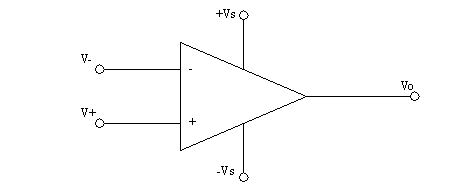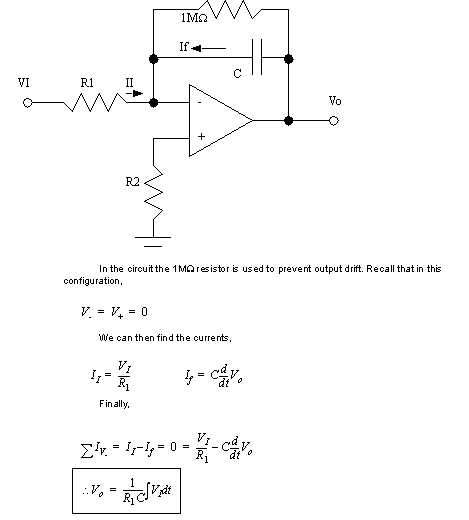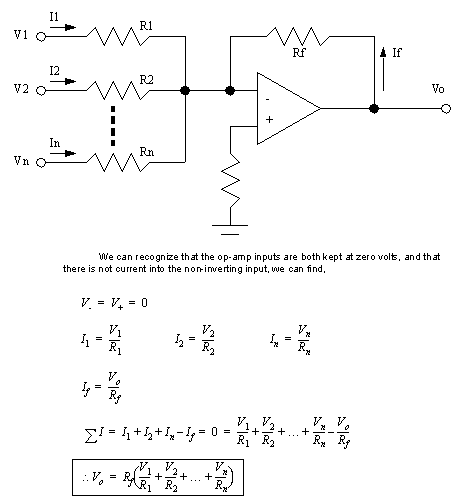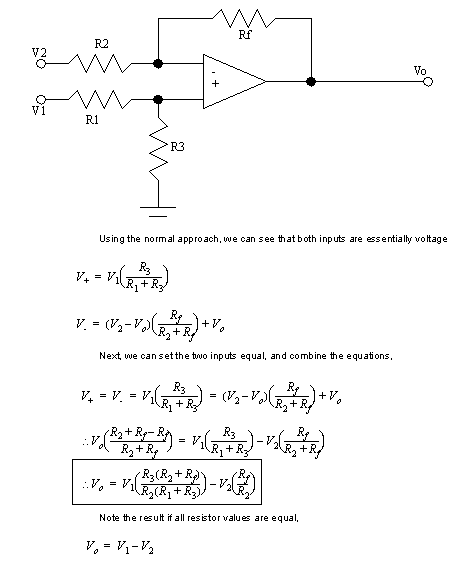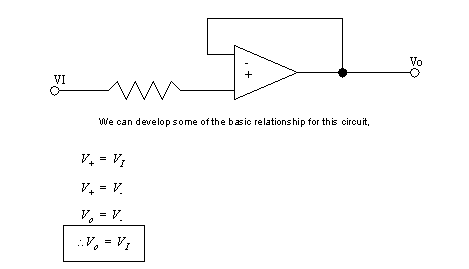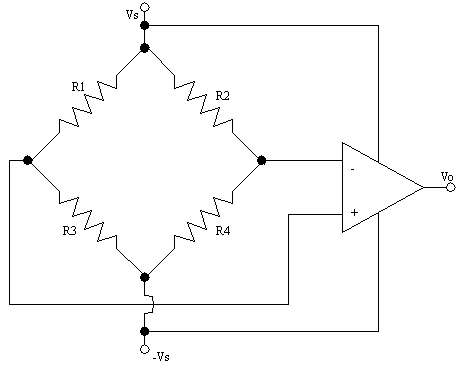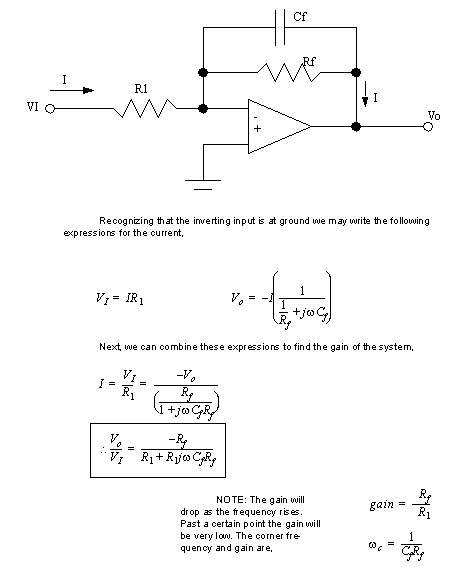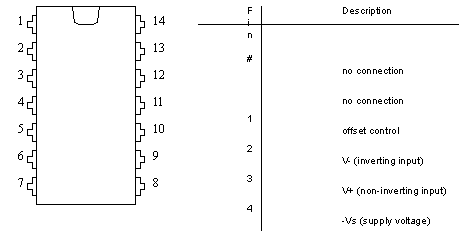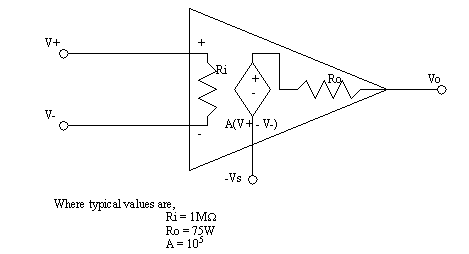1.1.1 General Details
• The schematic symbol for these devices is given below,
• Inside these devices have a very high gain amplifier that compares the inputs and gives an output that is amplified as shown by,
• When using these devices the circuit is typically set up so that both the inverting and non-inverting inputs have the same voltage, and the currents in to both of the inputs is negligable.
1.1.2 Simple Applications
• Considering that the Op-amp was originally designed to allow simple mathematical operations in circuit form, the following circuits tend to bemathematical in nature.
1.1.2.1 - Inverting Amplifier
• A typical op-amp application is the inverting amplifier.
1.1.2.2 - Non-Inverting Amplifier
• We can also make non-inverting amplifiers using the following circuit,
1.1.2.3 - Integrator
• The integrating amplifier is a very powerful application,
1.1.2.4 - Differentiator
• The following device is one form of differentiator using an inductor,
• A second type of circuit uses a capacitor to find the differential,
1.1.2.5 - Weighted Sums
• The following circuit can be used to add inputs. If dissimilar components are used the inputs can be weighted
1.1.2.6 - Difference Amplifier (Subtraction)
• We can construct an amplifier that subtracts one input from the other,
1.1.2.7 - Op-Amp Voltage Follower
• At times we want to isolate a voltage source from an application, or add a high impedance. This can be done using a voltage follower,
1.1.2.8 - Bridge Balancer
• Op-amps can be used for measuring the potential across bridges.
• When used in this mode, it is probable that both inputs may have the same voltage that is not zero. The result of this common offset is that the output will drift with the common inputs. The technical measure is the Common Mode Rejection Ratio (CMRR). This is generally measured by the manufacturer, and provided in the device specifications.
1.1.2.9 - Low Pass Filter
• A Low pass filter will enable us to cut off the higher frequency components of an input signal,
1.1.2.10 - The 741 Op-Amp
• The basic layout of the 741 op-amp is given below for the 14 pin dip package (14C1741).
• The basic layout of the 741 op-amp is given below for the 8 pin dip package.
1.1.3 Op-Amp Equivalent Circuits
• An equivalent circuit for an op-amp is given below,
1.1.3.1 - Frequency Response
• Open loop frequency response can be estimated using the equivalent circuit below,
